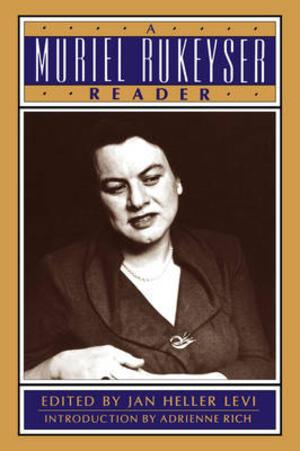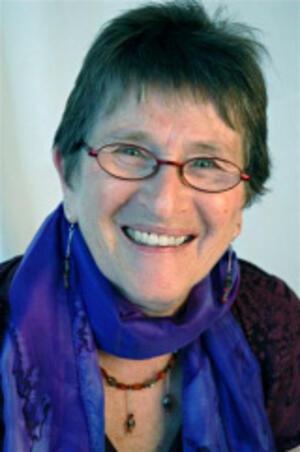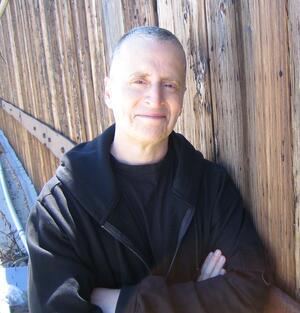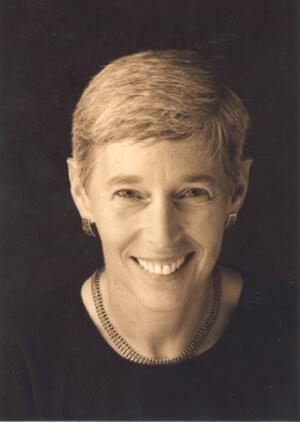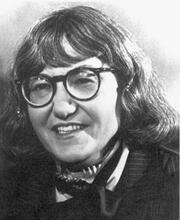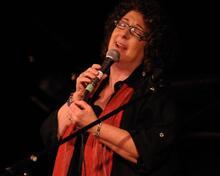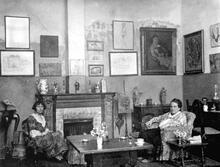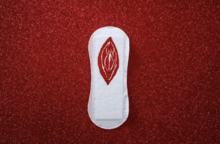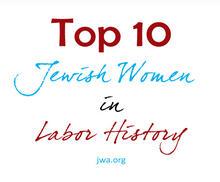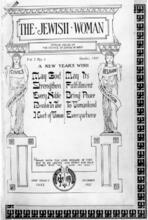Lesbianism
For most of its three-thousand-year history, lesbianism was a subject of little interest in Jewish texts and societies. Indeed, lesbianism is not mentioned in the Hebrew Bible, in contract to male homosexual behavior, which is expressly forbidden. In the early twentieth century, however, women, including Jewish women, began to live openly as lesbians. In the late twentieth century, large numbers of women began to claim lesbian identity, lesbians began to explore Jewish identity, and Jewish scholars and communities increasingly faced the issue of erotic love between women. Since the 1960s, Jewish lesbians have had an important impact in writing, religious movements, the arts, and political movements. Today, lesbian Jews continue to voice concerns that go beyond acceptance and toleration to seek a reinterpretation of Jewish values.
For most of Judaism’s 3000-year history, lesbianism has been a subject of little interest in Jewish texts and societies. Only in the late twentieth century did Jewish scholars and communities face the issue of erotic love between women.
Biblical Times (1000–165 B.C.E.)
Lesbianism is not mentioned in the Hebrew Bible, in contrast to male homosexual behavior, which is expressly forbidden as a capital crime. The absence of discussion of lesbianism in this context has raised scholarly interest. Biblical critics have suggested that this difference exists because female homoerotic behavior would not have been considered sexual behavior, which in ancient times was understood to require the emission of semen. A related theory suggests that nothing women did without men would matter because women were not full persons by biblical standards. More traditional Jewish scholarship suggests that the writers of the Bible knew nothing of erotic attraction between women and could not prohibit something about which there was no knowledge or awareness. Another traditional interpretation is that the behavior was obviously prohibited because what applied to men applied to women. Feminist interpreters posit that biblical society accepted erotic love between women as a matter of course. Without further evidence, all arguments are inconclusive. We have no information about erotic love between women in this time period in Jewish history.
Rabbinic Times (165 B.C.E.–A.D. 900)
The first discussion of female homoeroticism in Jewish texts is found in Sifra, a postbiblical commentary on the book of Leviticus, edited in the second century C.E. The reference is to a passage in Leviticus 18, which prohibits Israelite participation in acts deemed “the doings of Egypt.” The commentator in Sifra suggests that lesbian marriage was one of the acts that would be included in this category. What we can infer from this text is that at the time of its writing, Jewish communities were cognizant of the Roman practice of women marrying other women.
The Talmud, a compendium of Jewish law and practice compiled in the fifth century C.E., includes passages about mesolelot [female homoerotic behavior], not lesbian marriage. The word mesolelot is understood by later commentators to refer to the practice of tribadism (women rubbing genitals against each other). A passage in the Talmud (Yevamot 76a) questions whether women who practice mesolelot are eligible to marry priests. Virginity is the criterion upon which eligibility for priestly marriage is based: For example, a divorced woman or widow is not allowed to marry a priest. The Mishnah gives two opinions about the eligibility for priestly marriage of one who practices mesolelot. The accepted opinion is that such a woman is eligible, although the minority opinion is that she is not. In the majority opinion, lesbian behavior is considered a minor infraction. This passage establishes the existence of female homoeroticism in Jewish communities in ancient times. It also suggests that this behavior was understood by rabbinic authorities as a specific practice, not as a person’s sexual orientation, as the question is raised in the context of marriage to a man. Some authorities place it in the category of sexual practice, and as such it disqualifies the practitioner from the category of virgin.
Middle Ages (900–1700)
There is one significant discussion of female homoerotic behavior in the medieval era. This is found in a compilation of laws known as the Mishneh Torah, written by legal scholar and philosopher Moses Maimonides in the twelfth century. Maimonides reiterates the connection to the Levitical prohibition against the “doings of Egypt,” but also suggests that this behavior should not disqualify a woman from marrying a priest because it is still only a minor infraction. Maimonides then goes on to suggest that the courts administer a flogging to a woman who is caught engaging in homoerotic behavior. Finally, Maimonides warns men to keep their wives from visiting with women who are known to practice mesolelot with other women. This text views lesbian behavior as threatening to the institution of marriage and worthy of punishment.
Late Modern Era (1800–1945)

Institution: The Schlesinger Library, Radcliffe Institute, Harvard University
During the years of the late modern period, female homoeroticism was mentioned infrequently in Jewish sources. Most references are from fictional writings. An example is found in a Yiddish play written by Sholem Asch entitled Got fun Nekome [God of vengeance], which was translated into English and produced on Broadway in 1923. This play was the first with a lesbian theme to be performed on the American stage. The plot focused on a lesbian relationship between a prostitute and the daughter of a brothel owner and included several explicit homoerotic scenes. Noted Yiddish author Isaac Bashevis Singer also wrote several short stories about lesbian love.
In the early twentieth century, women, including Jewish women, began to live openly as lesbians. Gertrude Stein is perhaps the best-known example; less known are the circles of Jewish lesbians Stein and her partner Toklas surrounded themselves with. Pauline Newman, an organizer of the Jewish labor movement, lived openly with her partner in Greenwich Village, where they raised a child together. But for the most part, women who loved women prior to the 1960s neither identified publicly as lesbian nor had the opportunity to live openly in partnerships. The example of Lillian Wald, noted Jewish social reformer, was more typical of this period. Wald’s relationships were crucial to her social world, yet they remained hidden from view. It is still considered controversial to label Wald a lesbian, despite considerable historical evidence.
Early twentieth-century Jewish lesbian poets of note include Sophia Parnok, often referred to as “Russia’s Sappho,” and Vera Lachmann, a German who engaged in anti-Nazi resistance. The work of Muriel Rukeyser, a United States writer and activist who was bisexual, focused on an array of social justice issues, receiving attention both among Jews and in the United States more broadly, particularly among Jewish lesbians. At the turn of the twenty-first century, her poem “To be a Jew in the Twentieth Century” (1944) was adopted by both the Reform and Reconstructionist movements in the United States for their prayer books for its profound and hopeful articulation of Judaism being “a gift” out of the harrowing time that was World War II.
Contemporary Period (1945–)
Writing
The first Jewish novel by a woman that explored lesbian themes was Wasteland (1946), written by Ruth Seid under the pseudonym of Jo Sinclair. The female protagonist was open about her sexuality to her family. The novel is about her brother’s effort to come to terms with her lesbianism. This frank discussion of lesbian themes and the portrayal of lesbianism as a psychologically healthy alternative was unusual for its time.
One result of the feminist and gay liberation movements in the 1960s and 1970s was that large numbers of women began to claim lesbian identity and lesbians began to explore Jewish identity. The early 1980s witnessed an explosion of small groups of lesbians who were beginning to make connections to their Jewish identities, identifying their simultaneous rejection as Jews in the lesbian community and as lesbians in the Jewish community. Evelyn Torton Beck made these issues visible in her groundbreaking Nice Jewish Girls: A Lesbian Anthology (1982). Many lesbian novels with Jewish themes were published by women’s presses. This exploration of the connections between lesbian and Jewish identities was continued in Tribe of Dina (1986). Edited by leading secular Jewish lesbian thinkers Irena Klepfisz and Melanie Kaye/Kantrowitz, Tribe of Dina included essays by diverse heterosexual and lesbian feminists exploring Jewish identity.
With these volumes, the Jewish lesbian field consciously explored and purposely interrupted the Ashkenazi presumptions of United States Jewry, for example by including memoirs of Jewish women from Argentina and China, among others, as well as translations of traditional women’s literature from Yiddish, Hebrew, and Ladino. Non-Ashkenazi Jewish lesbians and Jewish lesbians of color Carol Conaway, Carolivia Herron, Maria Rosa Pegueros, Abigail Wells, Chanda Prescod-Weinstein, Denise Frohman, and T. Kira Madden also published important work.
With Elly Bulkin, Barbara Smith, and Minnie Bruce Pratt’s significant dialogue in Yours in Struggle (1984), the Jewish lesbian field also began an intense conversation with non-Jewish lesbians, both white and of color. Due to anti-Semitism as well as increasingly unacknowledged white privilege of many publishing Jewish lesbians, this diversity within Jewish lesbian activism and scholarship and robust exchanges between Jewish and non-Jewish lesbian feminists, however, quickly eroded.
In the late 1980s, Tracy Moore, from the United States, undertook a complex project of interviewing Israeli lesbians; the interviews were published in a 1995 volume entitled Lesbiot. Jewish lesbian feminists continued to explore issues together with other Jewish queers and with gay men generally. They also wrote about the benefits and limitations of identifying as lesbians and/or queer, the challenges facing the first generation of lesbian rabbis, and various issues for Orthodox and ultra-Orthodox Jewish lesbians. In 1989, Christie Balka and Andy Rose edited Twice Blessed: On Being Lesbian or Gay and Jewish. Melanie Kaye/Kantrowitz and Leslie Feinberg continued their multi-level work involving class-based frameworks, critical race theory, and feminist lesbian analysis. Unfortunately, outside of the forum Clare Kinberg and her cohort created in Bridges: A Journal for Jewish Feminists and Our Friends, class-based and critical race work became less frequent.
Religious Movements
In the 1980s, Jewish lesbians also began to make inroads in religious movements. Lesbian rabbis, including Stacy Offner and Linda Holtzman, began to disclose their sexual orientation, and many lost their jobs. For three years in the 1980s, Julie Greenberg from the Reconstructionist Rabbinical College and other LGBTQ religious leaders created Ameinu for gay, lesbian, and bisexual rabbis and cantors, and rabbinical/cantorial students, most of whom were closeted and dispersed throughout the country.
In the early 1990s, Dawn Rose and allies created the Incognito Club at the Jewish Theological Seminary, the Conservative Movement’s New York City seminary. This initiative was prompted by a devastating anti-gay and lesbian “witch-hunt” in the institution, part of a backlash after the movement’s 1983 decision to ordain women. Students thought to be lesbian or gay were brought into meetings with administrators to confirm or deny charges of homosexuality. Under United States law, as a religious institution the school could discriminate on the basis of sexual orientation, and it dismissed anyone who confirmed that they were not heterosexual. Many students left, and many were traumatized.
By 1990, the Reform and Reconstructionist movements had developed policies that sanctioned the ordination of lesbian and gay rabbis and raised the issue of performing commitment ceremonies for lesbian and gay couples; in 1993, the Reconstructionist movement sanctioned religious marriages for same-sex couples, followed in 2000 by the Reform movement. The Conservative movement officially ruled in 2006 that lesbian and gay men could be ordained as rabbis, a ruling that was adopted piecemeal by various Conservative seminaries over time; it also struggled longer over permitting lesbians and gay men to teach in religious schools, and did not fully formalize a ceremony to mark a same-gender marriage until 2012. With small but growing levels of change occurring, the Orthodox movements remained more intransigent, with many Orthodox leaders still publicly denouncing lesbianism as a sin. While European-heritage Jews make up the vast majority of seminary graduates, and white supremacy remains intact in US rabbinical seminaries, notable lesbian rabbis of color include Georgette Kennebrae, Sandra Lawson, and Isaama Goldstein-Stoll.
By 2001, women rabbis had identified themselves publicly as lesbians in significant enough numbers to motivate the publication of a volume of their stories. Edited by three rabbis who identify as lesbian (Rebecca Alpert, Sue Levi Elwell, and Shirley Idelson), Lesbian Rabbis: The First Generation includes autobiographical essays by eighteen Reform, Conservative, Reconstructionist, and other lesbian rabbis ordained in the 1970s, 1980s, and early 1990s.
The gay and lesbian synagogue movement, which began in the early 1970s and resulted in synagogues in some American metropolitan areas, provided a locus for lesbians to explore religious identity. Several of those synagogues have lesbian rabbis, including Congregation Beth Simchat Torah in New York City, which named Sharon Kleinbaum, a graduate of Reconstructionist Rabbinical College, as its first rabbinic leader in 1992.
Spiritual initiatives outside of formal Jewish movements also emerged in the late twentieth century, including numerous LGBTQ havurot (informal groups for prayer and community). Savina Teubal and other well-known Jewish lesbians, including composer/singer Debbie Friedman and scholar and rabbi Drorah Setel, founded Sarah’s Tent: Sheltering Creative Jewish Spirituality; this organization, aimed at Jewish feminist spiritual innovation, overlapped with other Jewish feminist initiatives with high lesbian participation and leadership. Teubal also convened two Los Angeles-based organizations: Shabbat Sheinit and the Ritual bathMikveh Ladies, which experimented with creative worship services and mikvah rituals respectively. In 1995, Reconstructionist rabbi Sarra Levine (now Lev) and Reform rabbi Rochelle Robins launched Bat Kol, a feminist yeshiva (Jewish house of study). Miryam Kabakov and others formed the Orthodykes, dedicated to supporting Orthodox lesbians. And in 2010, Eshel was founded to support Orthodox LGBTQ Jews in the United States. Rabbi Benay Lappe, ordained in the Conservative movement, created and runs SVARA, a queer and traditional yeshiva. Other Jewish lesbian-related projects also abound, such as Talmud Interrupted, a group of academics in the field of rabbinics sharing their work and strategizing about queering the discipline. Queer feminist Jill Hammer is co-creator and co-director of the Kohenet Hebrew Priestess Institute, which trains and celebrates leaders of Jewish earth-based, embodied, feminist, innovative ritual; the program currently hosts many queer participants and faculty.
Many lesbians who grew up ultra-Orthodox or Hasidic identify with a larger trend called OTD, or Off the Derech (path), and are supported by organizations intended for this population, such as Maagal, Footsteps, and JQY (Jewish Queer Youth). Chani Getter has been pivotal in these developments, as well as being a leader in the wider ranging women’s(+) (all those who identify as women in some way, including trans and gender queer people) community created through Nehirim. The 2014 film Devout and the 2017 film One of Us examine struggles of lesbians and gay men seeking to find ways to stay connected with their Orthodox commitments and communities.
The Arts: Impact and Creative Outlet
Jewish lesbians have utilized film, music, and performance art as creative outlets. Lesley Gore of “You Don’t Own Me” and “It’s My Party” fame (née Lesley Sue Goldstein; 1946-2015) was a singer-songwriter. Lucy Renee Mathilde Schwob (aka Claude Cahun) in Paris (d. 1954), Hannah Gluckstein (Gluck) in England (d. 1978), Denise Frohman in the United States, and Sharon Gershoni in Israel all work or worked in the fine arts.
Elana Dykewomon, who first became known in lesbian feminist circles for her 1974 Riverfinger Woman, began publishing specifically Jewish work in 1997 with Beyond the Pale. Klepfisz and Kaye/Kantrowitz continued to publish short stories and poetry. Sarah Shulman published her first novel, The Sophie Horowitz Story, in 1984 and is still active in the field. In 1989, Jewish lesbian feminist Lesléa Newman changed the landscape with her successful children’s book Heather Has Two Mommies; she continues to publish significant work. Heather Has Two Mommies featured a girl being raised by two lesbian mothers at a time when such a profile was not at all common. In the 1990s, a fecund cluster of Jewish lesbians began publishing new poetry and fiction.
Jewish lesbian and queer filmmakers have produced important films, spanning secular and religious realms and personal and political stories. In addition to Devout (2014) and One of US (2017), these include Alisa Lebow and Cynthia Madansky’s 1998 Treyf (non-kosher). Chronicling the filmmakers’ lives and relationship as a couple, this film was the first to bring a critical Jewish lesbian lens to mainly secular Jewish political issues, such as Jewish culture and family, homophobia, anti-Semitism, Zionism, and social justice. Lifetime Guarantee: Phranc's Adventures in Plastics on Jewish lesbian folksinger Phranc was released in 2001. Gay Jewish filmmaker Sandi DuBowski’s 2001 Trembling Before G-d looks at Orthodox Jews, including lesbians, living across the boundaries of orthodoxy and homosexual experience. Deborah Dickson’s 2002 Ruthie and Connie: Every Room in the House followed the long-term relationship of activists Ruth Berman and Connie Kurtz. In 2005, Hineni: Coming Out in a Jewish High School shared the story of Shulamit Izen, a lesbian student at a Boston-area Jewish high school. Izen went on to receive rabbinic ordination, and the film is still used as an educational tool by the Jewish queer organization Keshet. The first film to focus on Jewish lesbians in Israel, Keep Not Silent (2004), explored the lives of three Orthodox Jewish lesbians in Jerusalem who had been involved with the OrthoDykes.
Jewish lesbians and queers have also been central to the post-Holocaust revitalization of Yiddish culture in the United States and abroad. Adrienne Cooper, who came out later in life, was a significant leader in the 1980s revival of Klezmer (a musical tradition of the Ashkenazi Jews of Eastern Europe). Some of the founders of one of the most popular modern Klezmer bands, including the Klezmatics, were out queer musicians, including the well-known violinist Alicia Svigals. The Klezmatics named their first album Shvaygn = Toyt, Yiddish for Silence = Death, the slogan of the AIDS activist group Act Up. In 1998, Eve Sicular, who had been leading the band Metropolitan Klezmer since 1994, began giving presentations from her project “The Celluloid Closet in Yiddish Film” and formed the explicitly lesbian band Isle of Klezbos. Many lesbians and other queers were active in the now defunct United States Klezcamp and the still-operating Canadian KlezKanada. Moreover, lesbians and queers have been central to an array of Yiddish music and performance art, such as Jennifer Miller and Jenny Romain, who spearheaded Circus Amok, performance artist Sara Felder, musicians Natalia Zuckerman and Jewlia Eisenberg, and Jill Sobule. Additionally, lesbian scholars and activists Alisa Solomon and Marilyn Neimark initiated the WBAI/New York weekly radio show Beyond the Pale. Running for nineteen years, until 2014, the program featured “cutting edge Jewish culture and offer[ed] local, national, and international political debate and analysis from a Jewish perspective”; over its years on the air, it explored aspects of queer Yiddish culture and living in diaspora, as well as debates on Israel and United States social justice issues such as racism and economic inequality.
Politics and History
Jewish lesbians have long been involved in a wide array of political issues. Often engaged through their synagogues or non-Jewish groups, they have been particularly active in social justice arenas. A rare example of an explicitly Jewishly self-identified gay and lesbian activist group was the 1990s New York City-based Jewish Activist Gays and Lesbians (JAGL, originally named JYGL, Jewish Young Gays and Lesbians). JAGL engaged in public actions regarding treatment of gays and lesbians both within the Jewish community and more broadly. The group followed queer-related developments in the Conservative Movement, at the time the main Jewish religious movement publically struggling with queer issues. JAGL also created the Jewish Queer Think Tank, which for approximately seven years provided a space for deeper critical reflection on Jewish queer issues, such as same-gender partnering ceremonies, Jewish analyses of anonymous sex, and excavation of queer themes in ancient Jewish texts.
Jewish lesbians have also had a distinct role in Jewish peace work and international activism aimed at ending the war in Israel and Palestine. Marcia Freedman, a feminist and peace activist, broke new ground in the 1960s and 1970s as an immigrant to Israel from the United States and an out lesbian who became a Knesset Member with the Israeli Civil Rights Movement party Ratz. Many Jewish lesbians took risks as leaders in Jewish organizations and in the broader movements for Israeli, Israel-Palestine, and Middle East Peace. They mobilized in grassroots collectives such as Women in Black, as well as within larger initiatives such as Code Pink and an array of Zionist, non-Zionist, and anti-Zionist groups, including Americans for Peace Now, J Street, Jewish Voice for Peace, and If Not Now. Many grounded their work in activist traditions of modern Jewish history.
Notable Jewish lesbian writers and activists have drawn on their personal and familial connections to the Holocaust. Evelyn Beck and Irena Klepfisz, mentioned above for their founding roles in Jewish lesbian feminism, are both child survivors of the Holocaust. The stories of Jewish lesbian Holocaust survivors, such as Annette Eick, Frieda Belinfant, Gertrude Sandmann, Thea Spyer, and Felice Rahel Schragenheim have been preserved. Moreover, there are some well-done exhibits and memorials related to Jewish lesbians and the Holocaust, and there are groups for lesbian daughters of Holocaust survivors.
Lesbians helped to found Jewish LGBTQ projects and to keep them vibrant. Idit Klein founded Keshet, an organization dedicated to inclusion and equality for lesbians, gays, bisexuals, and transgender people in Jewish life. Originally a local grassroots group in the Boston area, over time Keshet gained recognition and merged with other LGBTQ Jewish groups across the United States. Other Jewish LGBTQ organizations with lesbian leaders and active participants have included Mosaic, Eshel and the National Union of Jewish LGBT Students. Penina Weinberg founded the Boston-based Ruach HaYam. GLOE – GLBT Outreach & Engagement at the Washington, DC, Jewish Community Center, and other lesbian-led local initiatives continue to develop around the world.
Lesbians have played central roles in creating and maintaining innovative Jewish feminist spaces over the years. B’not Esh (Daughters of Fire) was created in the early 1980s and meets annually over the Memorial Day weekend, seeking to transform Judaism and the Jewish community from a feminist perspective. A spirituality-focused group that explores liturgy, creative ritual innovation, Jewish texts, and politics and the arts, B’not Esh was designed to remain a relatively small group (with approximately 30 members at any given time), in which members could build ties and trust over time. Other Jewish feminist initiatives with prominent lesbian participation and leadership have included the National Council of Jewish Women, Ma’yan, Ritual Well, the Jewish Women’s Archive, Women of the Wall, and the Jewish feminist magazine Lilith.
Lesbian and queer feminists are active in all areas of Jewish life, including progressive groups such as Breira; New Jewish Agenda; Jews For Racial and Economic Justice (JFREJ); the Jewish Multiracial Network; the Jews of Color Convenings; Jews of Color Initiative; the Havurah movement; Jewish sustainability initiatives; the Workmen’s Circle; the American Jewish World Service; and the Shalom Center. Some notable Jewish lesbians of color active in communal arenas include Ilana Kaufman. Carmel Tanaka, and Erika Davis.
The era since the 1980s has borne witness to a growing interest in lesbian issues in the Jewish community. Articles have been published in the Jewish press. Symposia and conferences have been held by mainstream Jewish organizations. Some synagogues have incorporated discussions of lesbian issues into their agenda and actively welcome lesbian and gay members. These activities have made it more possible than in previous eras for lesbian Jews to feel welcome in the Jewish community. Jewish lesbian feminist work began in close connection with non-Jewish lesbian and feminist scholarship and activism and was highly attentive to diversity. Even with the deepening scholarly attention to intersectionality, this base in diversity and coalition work changed significantly since the early 1980s, in part due to historic anti-Semitism in the United States left. While anti-Semitism from the right has often had more of an institutional base, it has also long been difficult to be “out” as Jewish on the left given internalization of international Jewish conspiracy theories.
Despite much progress, Jewish lesbians continue to face exclusion in organizational and academic life as Jews, feminists, women, and lesbians. Jewish lesbian work is rarely published in other lesbian and feminist academic journals, and almost no lesbian-focused articles are published in the top ten Jewish Studies journals.
Additionally, as Jewish lesbians have sought to overcome exclusions, their work has at times produced some of its own. People speaking in the name of Jewish lesbians and dykes often exclude or marginalize bisexuals and trans lesbians. Some non-Ashkenazi and non-white Jewish lesbian feminists have published in volumes featuring the diversity of Jewish lesbian feminists, as well as elsewhere. Still, racial and other forms of diversity remain largely lacking in Jewish lesbian feminist writing, as does scholarly work on Jewish lesbian diversity.
Yet lesbian Jews continue to voice concerns that go beyond acceptance and toleration. They seek a reinterpretation of Jewish values, including the assumption that heterosexuality is normative. They desire inclusion of their visions and stories as part of a reconstructed Jewish textual tradition. And they aim to create an environment of comfort in which to claim their identity, celebrate the occasions of their lives, and transform society
Alpert, Rebecca. Like Bread on the Seder Plate: Jewish Lesbians and the Transformation of Tradition. New York: Columbia University Press, 1998.
Alpert, Rebecca, Sue Levi Elwell and Shirley Idelson, Lesbian Rabbis: The First Generation. New Brunswick, NJ: Rutgers University Press, 2001.
Balka, Christie, and Andy Rose, eds. Twice Blessed: On Being Lesbian or Gay and Jewish. Boston: Beacon Press, 1989.
Beck, Evelyn Torton, ed. Nice Jewish Girls: A Lesbian Anthology. Boston: Beacon Press, 1982; Rev. and updated 1989.
Biale, Rachel. Women and Jewish Law: An Exploration of Women’s Issues in Halakhic Sources. New York: Schocken, 1984.
Brettschneider, Marla. The Family Flamboyant: Race Politics, Queer Families, Jewish Lives. Albany, NY: State University of New York Press, 2006.
Brettschneider, Marla. “Jewish Lesbians: New Work in the Field.” Journal of Lesbian Studies. 2019, 23(1): 2-20 and passim special issue.
Kaye/Kantrowitz, Melanie, and Irena Klepfisz, eds. Tribe of Dina: A Jewish Women’s Anthology. Boston: Beacon Press, 1986.
Moore, Tracy, ed. Lesbiot: Israeli Lesbians Talk About Sexuality, Feminism, Judaism and Their Live. New York: Cassell, 1995.
Rogow, Faith. “Why Is This Decade Different from All Other Decades? A Look at the Rise of Jewish Lesbian Feminism.” Bridges 1 (Spring 1990): 67–79.
Sarah, Elizabeth. “Judaism and Lesbianism: A Tale of Life on the Margins of the Text.” Jewish Quarterly 40 (1993): 20–23.


